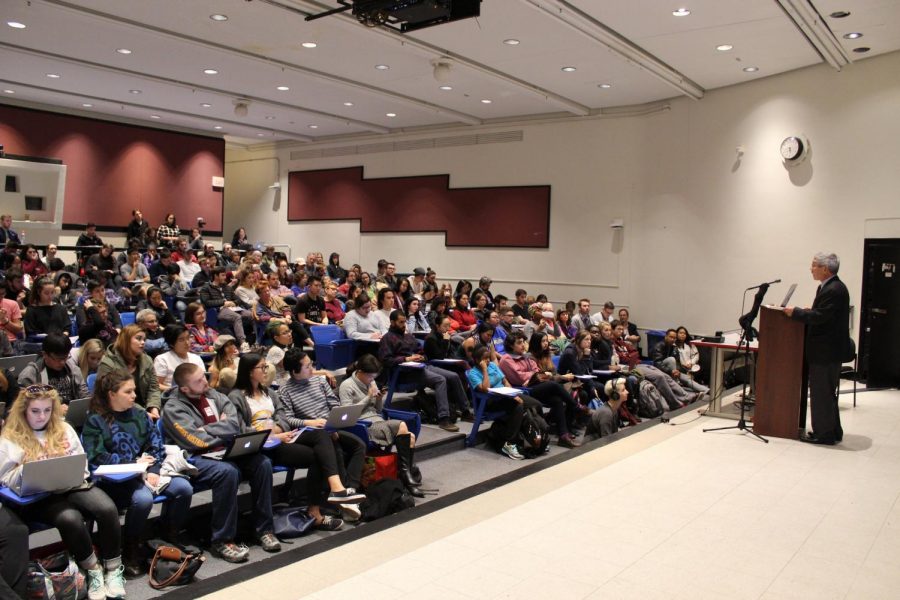Skip this paragraph if at any point it sounds familiar. A stereotypical American college student — let’s call him Michael Normalperson — goes to a college lecture class. He is bored. The time he doesn’t spend taking notes or listening to the professor is probably spent distracted by his phone or his laptop. He does the bare minimum amount of work required to pass the class, and he crams before midterms and finals. After each exam is over, he forgets a large amount of the information he just learned. After four years of this, Mike graduates with a degree.
If you’re a college student, it’s safe to say that you’ve been Mike at times. If you’re like me, some courses were so ineffective that you do not remember most of the information taught in them (and yet you still passed). The majority of college STEM (science, technology, engineering and math) courses are lectures, but one can’t help but think that lectures bore students more than they teach them, and that students in turn spend more time studying than learning. Are lectures really the best way to teach?
Research says that they’re not. In the 1980s and 1990s, some physics professors began to study the effectiveness of lecturing. Two of them, David Hestenes and Ibrahim Halloun from Arizona State University, developed a test called the Force Concept Inventory to test how well physics students understood physics concepts. After testing 1,000 students at the beginning and end of a semester, Hestenes and Halloun found that the students scored poorly at the beginning of the semester and only improved by 14 percent by the end of the semester.
Scott Freeman of the University of Washington also concluded that lecture-based teaching is flawed. In 2014, he and his team conducted a meta-analysis of 225 studies of STEM courses, and reported “students in classes with traditional lecturing were 1.5 times more likely to fail than were students in classes with active learning.”
Similarly, a study from 2011 by Richard Arum and Josipa Roksa, the authors of the book “Academically Adrift: Limited Learning on College Campuses,” discovered that after two years of college, 45 percent of students were not able to improve their performance on the Collegiate Learning Assessment. After four years, “36 percent of students did not show any significant improvement.”
The lecture method of teaching has been around for nearly a thousand years. Its appeal lies in that it is a simple, straightforward way to explain a concept to many people at once. And yet, lectures fail. Our brains can’t remember everything taught during an hour-long class. Our short-term memory just isn’t that good. There have to be better ways to teach.
One professor at Harvard believes that he has the answer. Beginning in 1990 and building off of the research done by Hestenes, Halloun and other researchers, physics professor Eric Mazur pioneered a teaching method called “peer instruction.” In classes taught using Mazur’s peer instruction method, students read up on an upcoming class’ topic and send in questions to the professor. Class time is spent answering multiple-choice polls, and students discuss the concepts that confuse them with other classmates. While this method may take some getting used to for both professors and students, the payoff is worth it. Students understand much more of the material when taught using this method.
In fact, according to the University of Washington meta-analysis, any learning activity that actively engages students — instead of passively lecturing them — boosted students’ overall final grades by six percent. As Mazur told Science Magazine, “it’s almost unethical to be lecturing if you have this data.”
College is expensive, and we should hope that professors use the best available methods to teach their students. Yet right now that’s not what’s happening. Having sat through enough droning lectures, I can tell you that I’m ready for a change. It’s time for professors to drop lecturing for more active approaches.
Joe Frank is a Collegian columnist and can be reached at [email protected].



















